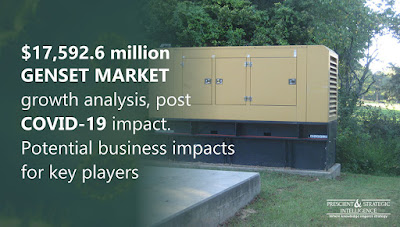Why will Demand for Gensets Skyrocket in Middle East and Africa in Near Future?
The generator set market is witnessing growth as a result of the increasing number of data centers and low production of power and widespread grid uncertainties around the world. As a result, the revenue garnered by generator manufacturers is expected to increase from $17,592.6 million in 2019 to $27,863.0 million by 2030, at a 5.8% CAGR during the forecast period (2020–2030). A genset is a combination of an internal combustion engine (ICE), alternator, and numerous accessories and controls.
Commercial, residential, and industrial are the divisions of the market when it is segmented on the basis of application. During the historical period (2014–2019), commercial was the largest division, on account of the increasing investments in the development of infrastructure, rapid construction of smart cities, and rising number of shopping complexes. As a result of the increasing consumer spending, the retail sector is growing, which is leading to the construction of shopping centers. Therefore, the commercial division will also witness the fastest market growth during the forecast period.
One of the strongest drivers for the generator set market is the establishment of data centers. With the increasing usage of smartphones, the internet, cloud computing, autonomous and connected vehicles, streaming services, and intelligent personal assistants, a rising volume of data is being created and consumed. Resultingly, data centers are being constructed to provide this voluminous data adequate storage. Since such places cannot tolerate power cuts because of the sensitive nature of their components and systems, they need generators for consistent Ampere and voltage ratings.
Similarly, the genset market is also being propelled by the persisting problems of insufficient electricity production and grid uncertainties in several countries. Poor countries, such as Nigeria and Ghana, already produce way less energy than they need, and their grid infrastructure is also not reliable, both of which lead to huge transmission losses. Some reasons behind grid failures include the non-payment of the high maintenance charges, aging infrastructure, electricity and component theft, and natural disasters, such as tornadoes, hurricanes (also called cyclones and typhoons), and earthquakes.
Hence, the market will keep growing with the increasing pace of industrialization and construction.



Comments
Post a Comment